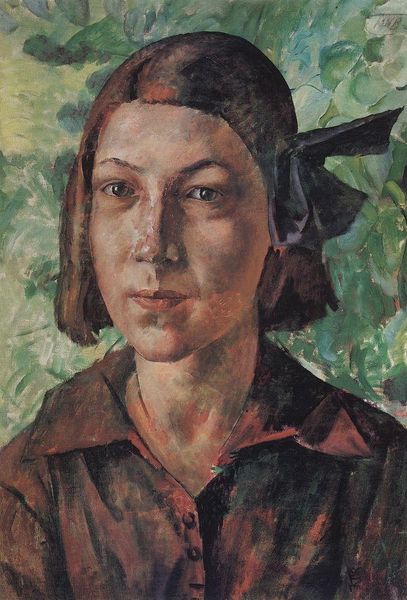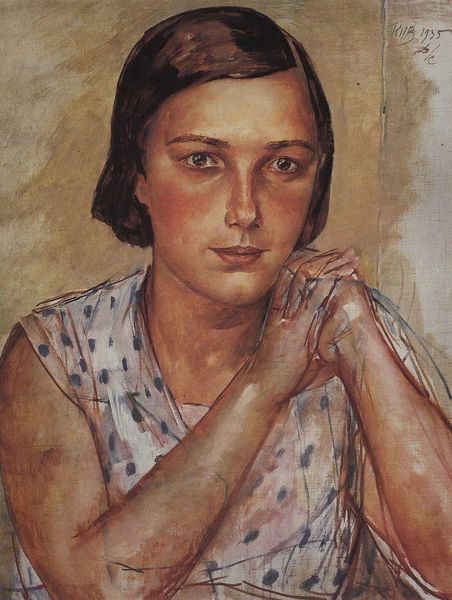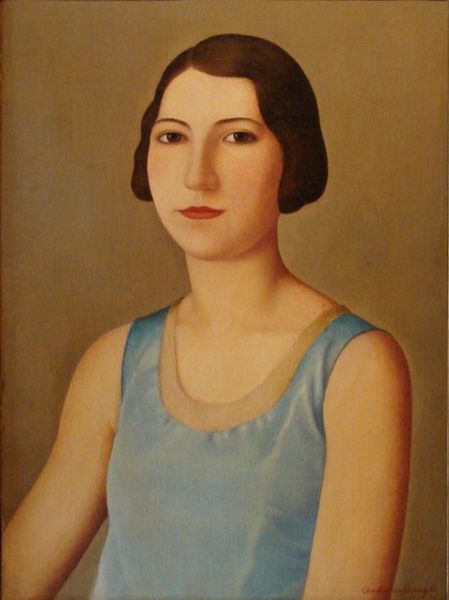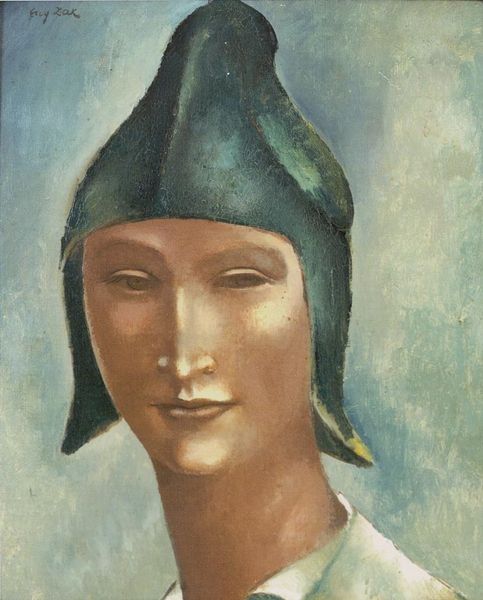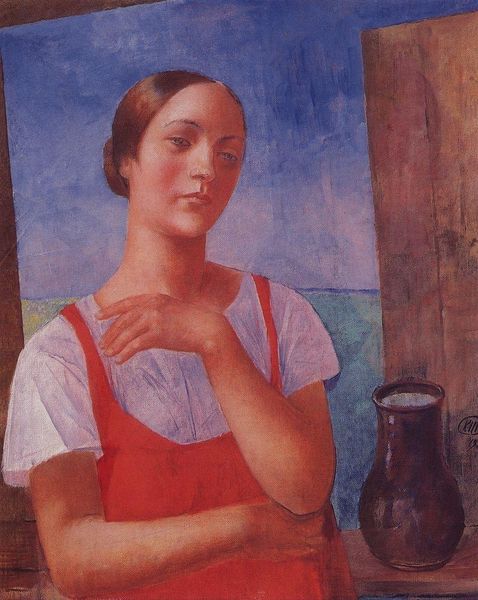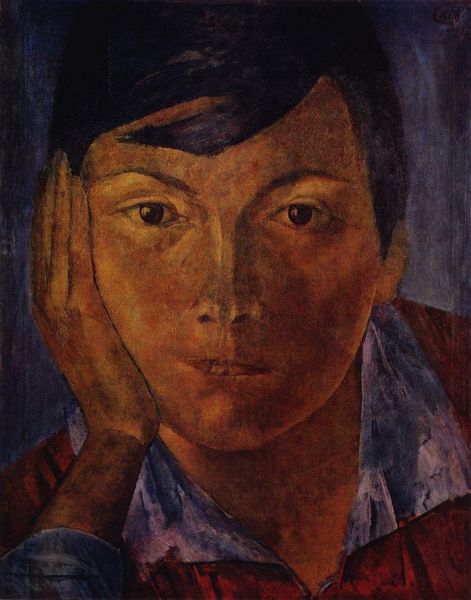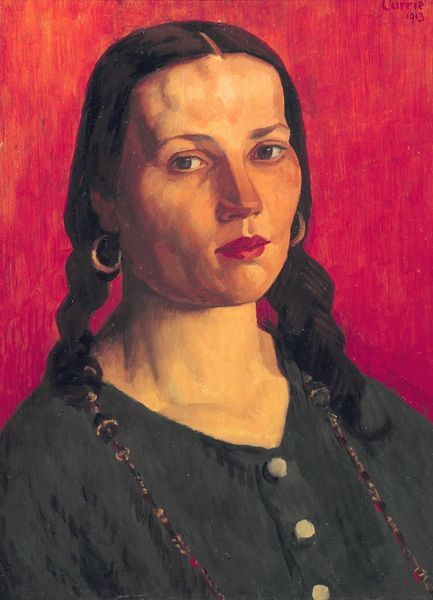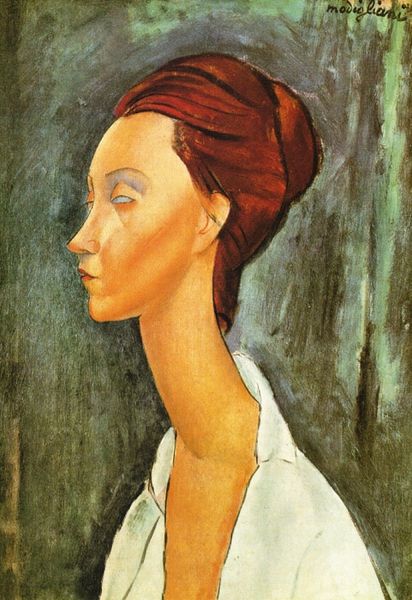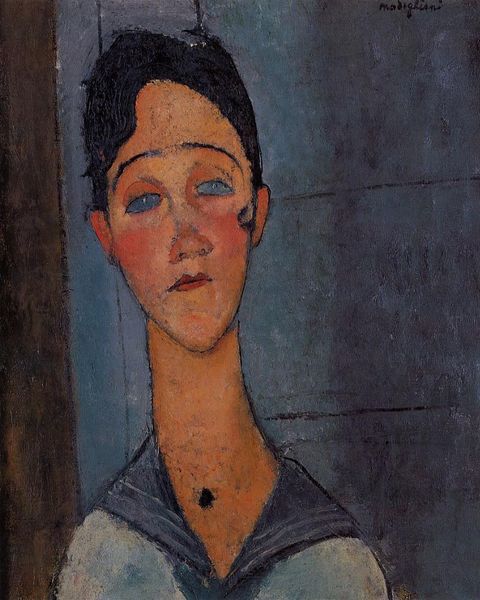
painting, acrylic-paint
portrait
head
face
painting
soviet-nonconformist-art
acrylic-paint
figuration
portrait reference
portrait head and shoulder
expressionism
animal portrait
animal drawing portrait
nose
portrait drawing
facial portrait
forehead
portrait art
modernism
fine art portrait
realism
celebrity portrait
digital portrait
Copyright: Public domain
Editor: Here we have Kuzma Petrov-Vodkin's "Girl in Red Scarf (Worker)" from 1925, done with acrylics, as I understand. It's quite a compelling portrait; her gaze feels both direct and slightly melancholic. How do you read this painting? Curator: It’s a fascinating piece. The red scarf immediately flags a visual association with the burgeoning Soviet state – red being its emblematic color, of course. It’s a strong political statement, or rather a social one through art. Do you see her more as an individual or as a representation of something larger? Editor: I suppose, a little bit of both. Individuality seems clear to me in the specific rendering of her features, the soft shading on her face… Curator: Exactly. Petrov-Vodkin painted this during a period of significant social upheaval. How do you think art was used to build the new cultural vision that the Bolsheviks were trying to achieve at this time? Editor: I think in portraying common laborers – like the woman with the red scarf, obviously a signifier for the worker - artists were attempting to uplift them to a higher symbolic status, to highlight their value to society, so the political machine promoted works as a means of celebrating communism's values. Curator: Precisely! It becomes a question of agency. Did art serve propaganda or could artists inject their perspectives into the mainstream view? Where do you think Petrov-Vodkin falls? Editor: I see his humanism shining through, there is a tenderness in his approach that subverts a purely political reading, don't you agree? It certainly broadened my perspective about Soviet-era art. Curator: And it underscores the complexities of art produced during times of ideological intensity, which is why context always remains critical to interpretation. A very enriching conversation!
Comments
No comments
Be the first to comment and join the conversation on the ultimate creative platform.
